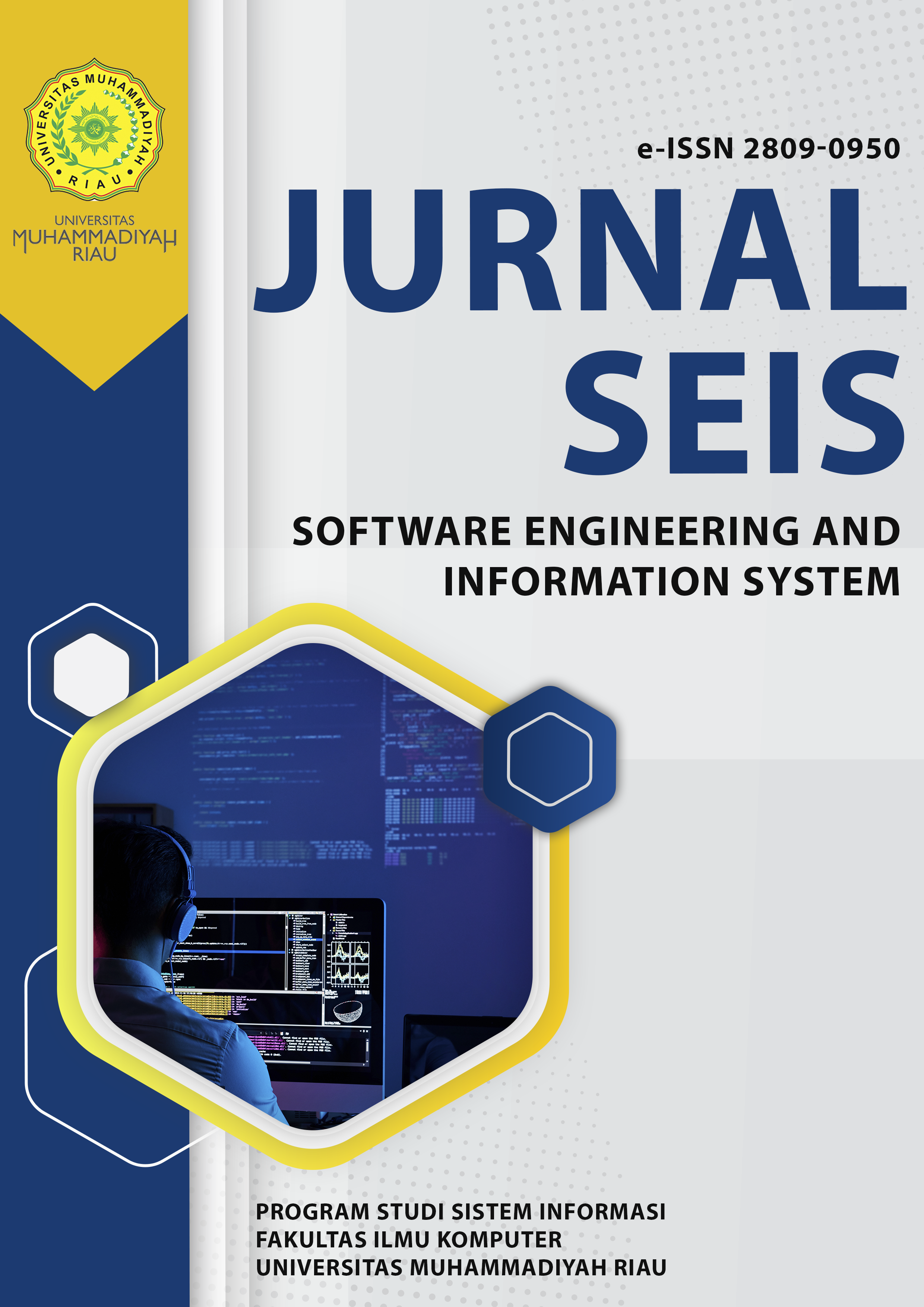PEMODELAN MACHINE LEARNING DENGAN ALGORITMA RANDOM FOREST DALAM MEMPREDIKSI RISIKO STROKE
DOI:
 https://doi.org/10.37859/seis.v5i2.9590
https://doi.org/10.37859/seis.v5i2.9590
Abstract
Stroke is one of the diseases that significantly affects health and economy, becoming the second most common cause of death in the world after coronary heart disease. Based on data from the World Health Organization (WHO), stroke is ranked second as the leading cause of death in the world after ischemic heart disease. In 2019, stroke was responsible for around 11% of total global deaths. One important way to reduce the death rate from stroke is to make prevention efforts through early prediction. Machine learning methods, especially Random Forest, are used in this study to predict the risk of stroke. The data used comes from a public dataset that includes age, gender, blood pressure, blood sugar, smoking status, and other medical history. The research process includes data pre-processing stages (data cleaning, outlier handling, and category coding), model training using the Random Forest algorithm, and model evaluation using a confusion matrix to evaluate accuracy, precision, recall, and F1 score. The evaluation results show an accuracy value of 97.55%, which indicates very good predictive performance so that this model has very good predictive performance.
Downloads
References
Ary Prandika Siregar, Dwi Priyadi Purba, Jojor Putri Pasaribu, & Khairul Reza Bakara. (2023). Implementasi Algoritma Random Forest Dalam Klasifikasi Diagnosis Penyakit Stroke. Jurnal Penelitian Rumpun Ilmu Teknik, 2(4), 155–164. https://doi.org/10.55606/juprit.v2i4.3039
Ashfania, G. A. M., Prahasto, T., Widodo, A., & Warsokusumo, T. (2023). Penggunaan Algoritma Random Forest untuk Klasifikasi Berbasis Kinerja Efisiensi Energi pada Sistem Pembangkit Daya. ROTASI, 24(3), 14-21.
Fadli, M., & Saputra, R. A. (n.d.). KLASIFIKASI DAN EVALUASI PERFORMA MODEL RANDOM FOREST UNTUK PREDIKSI STROKE Classification And Evaluation Of Performance Models Random Forest For Stroke Prediction. 12. http://jurnal.umt.ac.id/index.php/jt/index
Pandhita, G., Samino, & Bustami, M. (2017). Skor ICH-GS untuk prediksi prognosis pasien stroke perdarahan intraserebral di Rumah Sakit Islam Jakarta Pondok Kopi. CDK, 44(12), 847–850.
Patmawati. (2023). https://bufnets.tech https://doi.org/10.59688/bufnets BULLETIN OF NETWORK ENGINEER AND PREDIKSI PENYAKIT STROKE MENGGUNAKAN SUPPORT VECTOR MACHINE (SVM) STROKE PREDICTION USING A SUPPORT VECTOR MACHINE (SVM). https://doi.org/10.59688/bufnets
Putri, M. (2024). Prediksi Penyakit Stroke Menggunakan Machine Learning Dengan Algoritma Random Forest. Jurnal Infomedia: Teknik Informatika.
Ristyawan, A., Nugroho, A., & Amarya, T. K. (2025). Optimasi Preprocessing Model Random Forest Untuk Prediksi Stroke. 12(1), 29–44.
Teknika, J., & Ria Supriyatna, A. (n.d.). Teknika 17 (1): 163-172 Prediksi Penyakit Diabetes Menggunakan Algoritma Random Forest. IJCCS, x, No.x, 1–5.
Wahyu Setiyo Aji, P. (2023). Stroke Disease Prediction Using Random Forest Method [ Prediksi Penyakit Stroke Menggunakan Metode Random Forest ]
Wahyu Setiyo Aji, P., & Dijaya, R. (2023). Prediksi penyakit stroke menggunakan metode Random Forest. KESATRIA: Jurnal Penerapan Sistem Informasi (Komputer & Manajemen), 4(4), 916–924.
World Health Organization. (2020). The top 10 causes of death. Diakses pada 28 Juni 2025 dari: https://www.who.int/news-room/fact-sheets/detail/the-top-10-causes-of-death
Downloads
Published
Versions
- 2025-10-15 (2)
- 2025-08-20 (1)
How to Cite
Issue
Section
License
Copyright (c) 2025 Nurul Sakhila Indayana, Doni Arman, Finanta Okmayura, Suci Putri Anjani, Fitri Nur Dayani, Muhammad Farhan, Ariya Faturrahman

This work is licensed under a Creative Commons Attribution-ShareAlike 4.0 International License.
Copyright Notice
An author who publishes in the Journal of Software Engineering and Information System (SEIS) agrees to the following terms:
- Author retains the copyright and grants the journal the right of first publication of the work simultaneously licensed under the Creative Commons Attribution-ShareAlike 4.0 License that allows others to share the work with an acknowledgement of the work's authorship and initial publication in this journal
- Author is able to enter into separate, additional contractual arrangements for the non-exclusive distribution of the journal's published version of the work (e.g., post it to an institutional repository or publish it in a book) with the acknowledgement of its initial publication in this journal.
- Author is permitted and encouraged to post his/her work online (e.g., in institutional repositories or on their website) prior to and during the submission process, as it can lead to productive exchanges, as well as earlier and greater citation of the published work (See The Effect of Open Access).
Read more about the Creative Commons Attribution-ShareAlike 4.0 Licence here: https://creativecommons.org/licenses/by-sa/4.0/.










